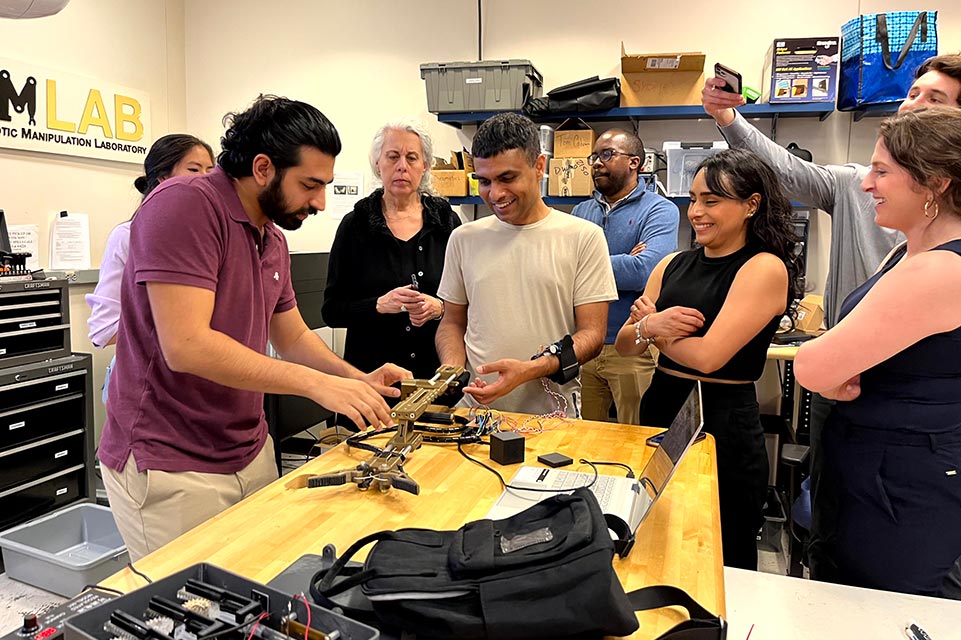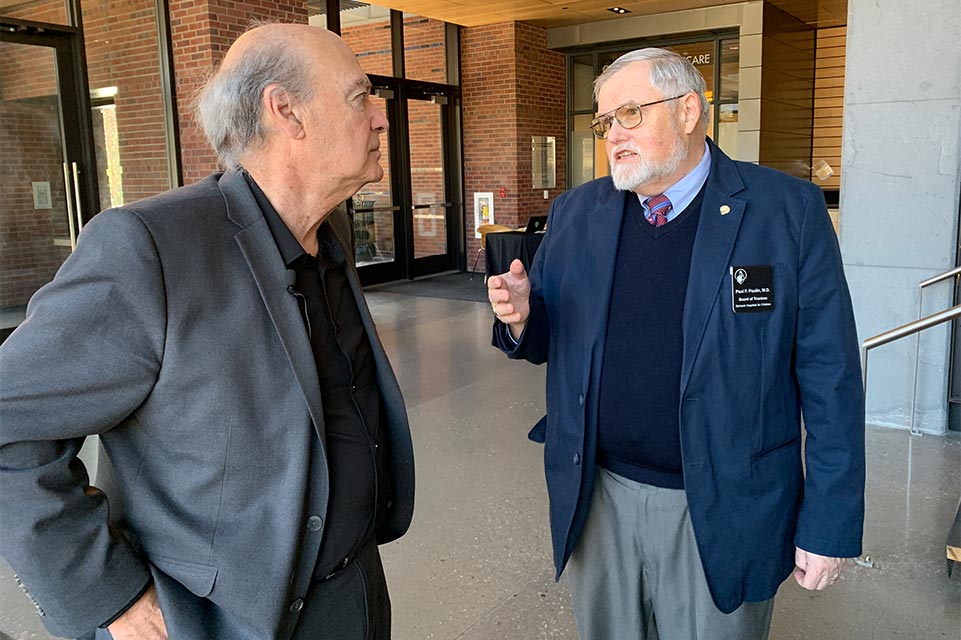Advancing Research Through Collaboration

Touring a Georgia Tech lab
State of Research Conference Unites Shriners Children's, Georgia Tech
A big milestone for Shriners Children's research was the fifth annual State of Research conference. The intersection of healthcare and engineering took center stage in March on the campus of the Georgia Institute of Technology. The conference brought together experts from the fields of healthcare, engineering and technology to foster collaborative efforts aimed at driving innovation in pediatric care.
One of the main objectives of the conference, which featured a special emphasis on muscle and bone health, was to create a platform for healthcare and engineering professionals to exchange ideas and explore ways to leverage technology for pediatric research and innovation.
“Research only advances through collaboration,” said Marc Lalande, Ph.D., vice president of research for Shriners Children's. “If you look at where research is now in 2023, at scientific publications that impact and change the world, they are done in groups that are multidisciplinary — a surgeon for example, working with an engineer. These meetings are to bring people together so that the physicians will hear, for example, what the engineers are doing and how they can all work together to improve the lives of our kids.”
Shriners Children's and Georgia Institute of Technology are an ideal matchup because of the university’s Pediatric Technology Center, with thousands working in the biomedical engineering field. “The university has a wide range of specialties,” said Dr. Lalande, “from building exoskeletons that help our kids walk to helping us put our data together in a modern way and use artificial intelligence to mine that data to find exciting results.”
The collaboration allows Shriners Children's physicians who may have a specific idea for a project or a request to develop a tool, to be paired with expertise at Georgia Tech. “This is huge for us,” Dr. Lalande said, “because it opens doors to all kinds of technologies that are being developed by these engineers. Cutting-edge areas for collaboration include clinical data analytics, artificial intelligence, remote sensors for motion analysis, and customized exoskeletons for improving movement and other abilities. We look forward to exciting joint discoveries that will impact quality-of-life of our pediatric patients.”

Marc Lalande, Ph.D., vice president of research at Shriners Children's, and Paul Poulin, M.D., member of the Shriners Children’s Board of Trustees, at the State of Research conference
Themes that emerged during the conference were finding new ways to gather and utilize data that exists across our healthcare system, and using artificial intelligence to find patterns in data in order to guide clinical decision-making. From the research idea incubator to projects on translating patient-reported outcomes into clinical practice to investigations into rare diseases such as arthrogryposis, and projects such as SCORES (Shriners Consortium for Outcomes, Research and Education in Sports) and GL-SMART (Greenville‐Lexington Shriner Multi‐site AI‐enabled Rehabilitation Technology for Scoliosis Patient Care), leveraging the immense amount of data that Shriners Children's has as a system is key.
Following the event’s focus on muscle and bone health, Shriners Children's presenters also discussed topics including motion analysis, cerebral palsy and scoliosis. In addition, there were presentations on genomics research, including the launch of the genomics project at Shriners Hospitals for Children Mexico and the Shriners Children's gene sequencing collaboration with Illumina; cleft lip and cleft palate; and more.
Presentations by Georgia Tech faculty and students shed light on work being done in AI, robotics, biofeedback, wearable sensors and more. Lab tours showed the equipment and the work in action.
An evening of poster presentations provided time for researchers from both organizations to mingle, share insights and even make plans for future collaboration. For example, Georgia Tech faculty member Alexey Tumanov presented his work on AI prediction of sepsis, which prompted Shriners Children's researchers to wonder if his techniques could help identify which international burn patients would need transfer by air ambulance and which could safely travel by other means.
“We are hungry for important problems to solve,” said M.G. Finn, Ph.D., chief scientific officer of the university’s Pediatric Technology Center. “And what could be more important than helping the patients of Shriners Children's, and all children around the world?”
Keep In Touch
Join our mailing list to stay up to date on everything that's happening at Shriners Children's.
